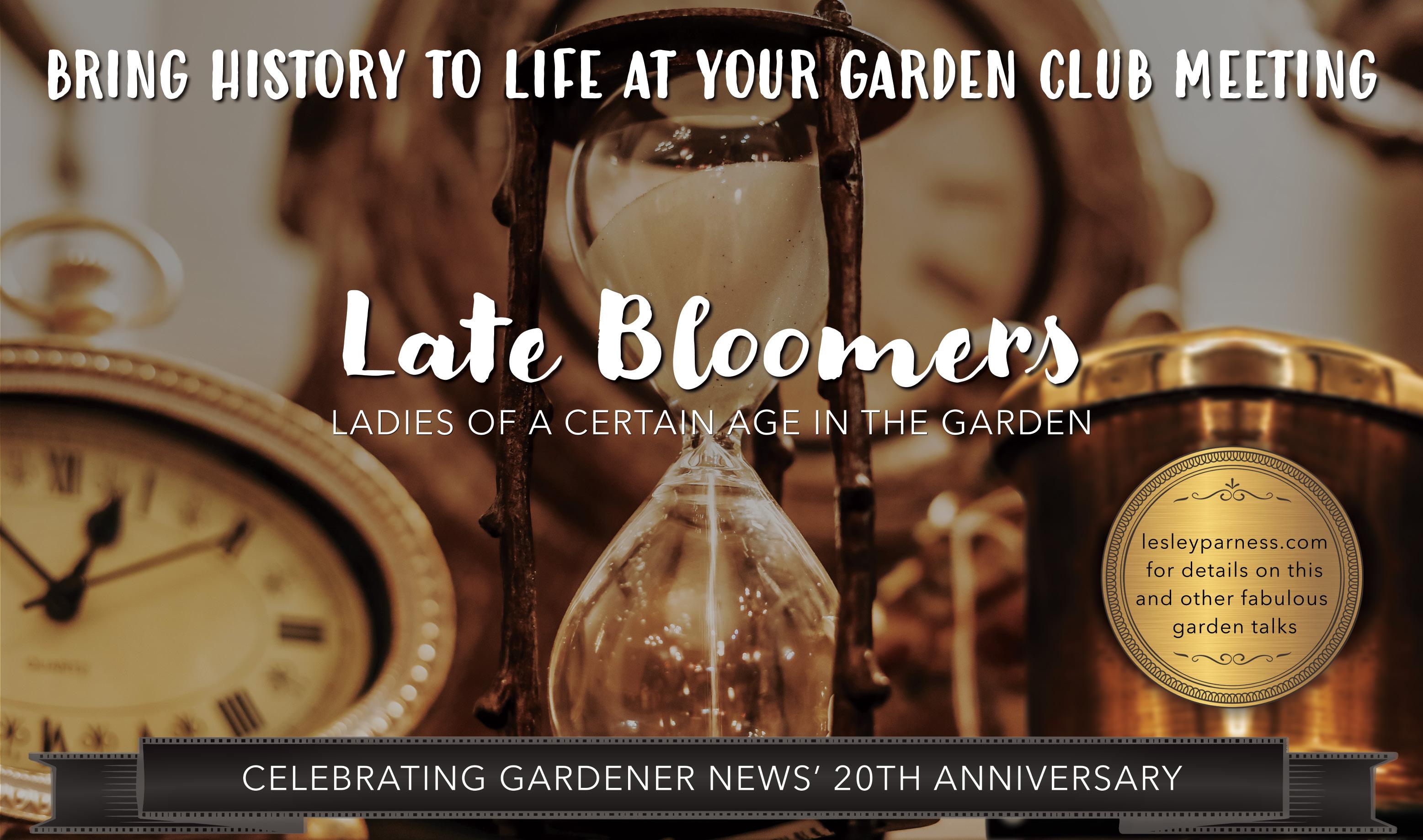
3 minute read
Late Bloomers: Ladies of a Certain Age in the Garden
This is an issue which celebrates anniversaries. Firstly, the 20th anniversary of Gardener News. I am proud to have been a part of this publication since its inception, look forward to reading every issue, and am amazed at the talented writers and the depth and variety of knowledge they present.
Another anniversary of note is that of the Chelsea Physic Garden, London’s oldest botanic garden. Founded in 1673, this year marks its 350th anniversary. Located near the Thames on four acres of land, it was first established by apothecaries in order to grow medicinal plants, and functioned as a living medicine chest in which they could sharpen their identification skills. The Worshipful Society of Apothecaries, a kind of trade union or guild created in Queen Elizabeth’s I reign, chose this Chelsea location for several reasons.
The river provided warm air currents, and with it a microclimate that allowed plants not frequently found growing outdoors in England to thrive. Previously the site of a market garden, the soil was of a good quality in which to foster the many seeds and plants arriving from countries around the globe. Moreover, its proximity to the Thames permitted ships just back from plant finding expeditions to dock nearby. The garden thereby received plant material first and propelled its international reputation. Acknowledged as the nexus of global seed exchanges, the Garden’s Index Seminum began in the 1700s and continues to this day.
Many luminaries of garden history have passed through its outdoor “rooms.” Among these are Sir Hans Sloane, Irish physician and naturalist, whose collection of 71,000 items helped found The Natural History Museum, the British Library, and the British Museum. In 1712, Sloane purchased the struggling garden and surrounding lands and leased it to the Worshipful Society of Apothecaries for a paltry five pounds a year in perpetuity.
It is in this garden, in 1737, that we meet the first character from my new talk, “Late Bloomers –Ladies of a Certain Age in the Garden,” hard at work drawing plants. Elizabeth Blackwell (17071758?) is the author of “A Curious Herbal,” first published in London in 1739 with the support of Sloane and the garden’s Praefectus Horti, Isaac Rand. She had no formal botanical training, nor had she any formal art training beyond that of what young women of the upper class would have received. Ms. Blackwell, however, was no longer a young woman. She was in fact, a 30-year-old wife, and the mother of two young children, now recently deceased. Her husband, Alexander, was in jail. And it was for his freedom that she convinced these extremely sophisticated gentlemen to be her patrons and then drew like a woman possessed. Her husband, a physician, had decided to change careers and try out printing. But he had not the license to do so and found himself dunned. Unable to pay the fine, he was summarily sent to the clink. Elizabeth “presold” copies of her forthcoming book with Sloane’s help and raised enough money to set her husband free.
Blackwell’s herbal, one of the earliest English botanicals with copperplate engravings, is even more amazing because the entire production of each plate –drawing, engraving, and coloring – was done by the author herself in her modest Swan Walk bedsit, just a few minutes’ walk from Chelsea Physic Garden. It contains 500 engravings. She completed four a week for 125 weeks in a row. Did I mention that the text was engraved as well! The text, written by Alexander from his jail cell (how Elizabeth managed to convince his jailors to allow this remains a mystery) was in Greek, Latin, and French. Alexander was a scholar but also a jerk. Once the pages were printed, Elizabeth would hand color each plate with inks she ground and mixed in that cold, little room.
Newly freed but never one to learn from mistakes, Alexander then rushed them off to Sweden where he committed yet another faux pas, this time of a political nature, and got himself beheaded in 1747. All of her efforts in vain, Elizabeth Blackwell returned to Swan Walk where she lived not another 20 years, (the date of her death is disputed) alone and in relative poverty, but with the comfort of the plants she had grown to love.
Ms. Blackwell’s accomplishments have largely been ignored by history, but her spectacular book with its first looks at “exotick” plants from the “Nieuw” World such as Cacao and Lycopersicum Esculentum (cocoa and the tomato) survives and can be viewed at biodiversitylibrary. org. The story of Elizabeth and a dozen other women – spinsters, widows, divorcees, and dissolute socialites, are all part of “Late Bloomers,” tales of ladies who discovered a passion for plants late in their lives, but nevertheless, left their marks in horticultural history. Happy Anniversary, Tom, and congratulations on your wonderful achievement!
Editor’s Note: Lesley Parness offers a variety of presentations and workshops for garden clubs, plant societies, and horticultural gatherings. Recently retired from her position as Superintendent of Horticultural Education at the Morris County Park Commission, and with four decades of teaching environmental science and garden education, her focus now is garden history. A complete listing of her talks can be seen at lesleyparness.com and she can be reached at parness@verizon.net. This column will appear in the paper every other month.



















